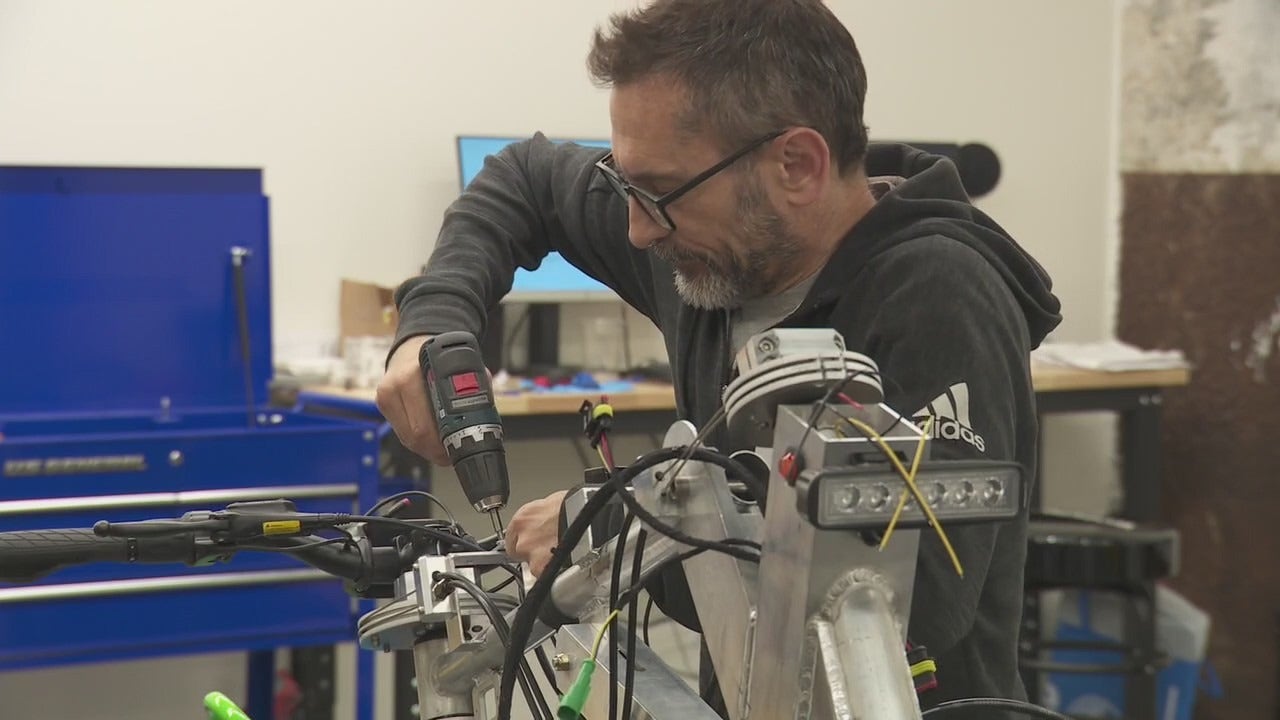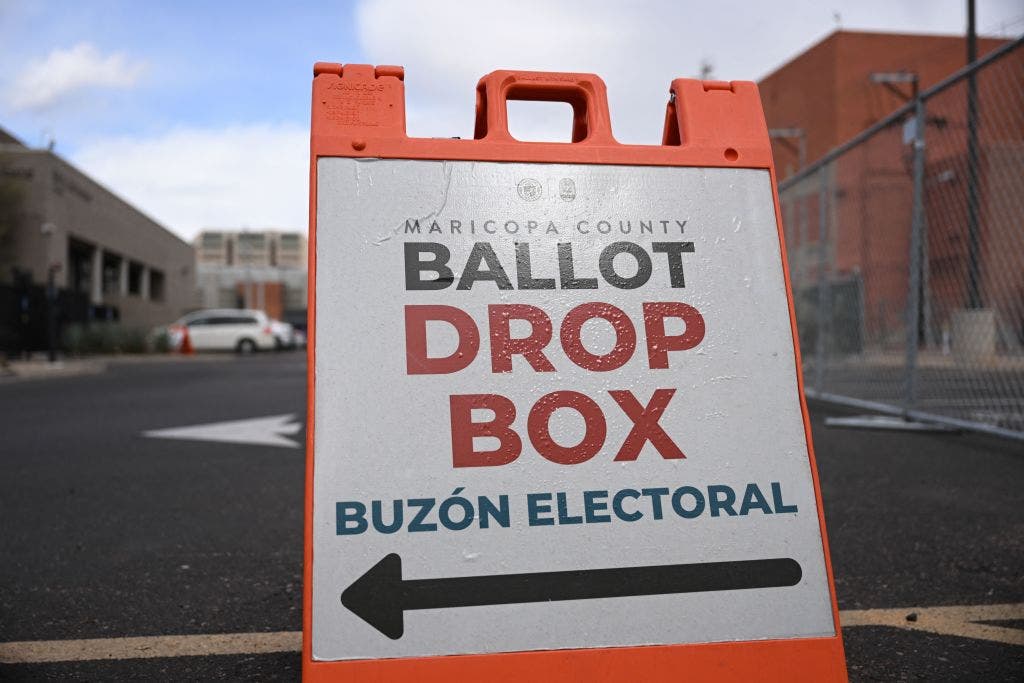World
$24bn for Ukraine tops Biden budget request ahead of looming showdown
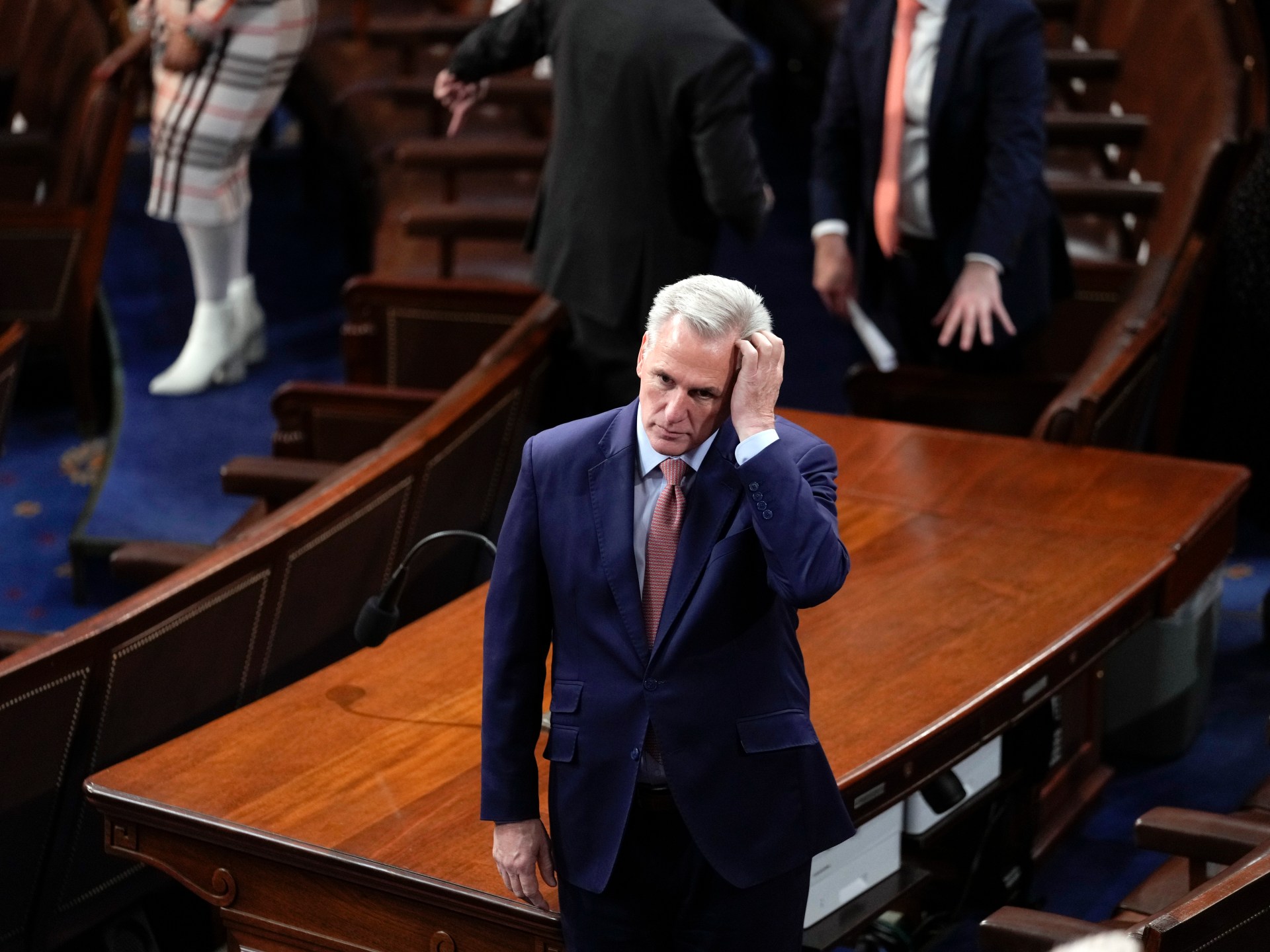
Biden also requested funding for border security and disaster relief, as extreme weather continues to ravage US.
United States President Joe Biden has submitted a request for about $40bn in additional spending, with over half slated to go towards support for Ukraine.
The proposal represents the first additional aid request made by the Biden administration to Congress since Republicans took control of the House of Representatives in January.
In response to Russia’s ongoing invasion of Ukraine, the Biden administration is seeking $24bn in additional assistance for the government of Ukrainian President Volodymyr Zelenskyy and other countries facing knock-on effects from the violence.
While aid to Ukraine enjoys strong bipartisan support, a group of Republicans on the far right have grown increasingly resistant to providing more funding. Their leverage in the House, where Republicans hold a narrow majority, could prove a stumbling block.
In June, Republican House Speaker Kevin McCarthy told Punchbowl News that any additional Ukraine assistance requests were “not going anywhere”. Such aid would need to be allocated from the Pentagon’s discretionary spending during the annual congressional appropriations process, he said.
In a letter on Thursday, White House budget director Shalanda Young urged McCarthy to swiftly follow through on the US’s “commitment to the Ukrainian peoples’ defence of their homeland and to democracy around the world”, as well as other needs.
Thursday’s request includes $13bn in emergency defence aid to Ukraine and an additional $8bn for humanitarian support through the end of the year. It comes as a Ukrainian counteroffensive has slowed: Its forces have run up against heavily mined terrain and reinforced defensive fortifications.
The US has already approved four rounds of aid to Ukraine in response to Russia’s invasion, totalling about $113bn, with some of that money going towards replenishment of US military equipment that was sent to the front lines.
Congress approved the latest round of aid in December, with roughly $45bn earmarked for Ukraine and NATO allies.
Senate Majority Leader Chuck Schumer applauded Biden’s latest funding request, indicating the Democrat-led chamber would back it.
“The latest request from the Biden administration shows America’s continued commitment to helping Americans here at home and our friends abroad; and should send a clear signal to [Russian President] Vladimir Putin, the Chinese government, and others of America’s resolve when it comes to defending democracy around the world,” Schumer said in a statement.
The Biden spending request also included $4bn for border security and $12bn to replenish federal disaster funds amid a deadly season of heat, storms and wildfires exacerbated by climate change. An extra $416m would go to counter the illicit fentanyl trade.
US legislators are currently on their August recess, with a budget showdown over government funding expected upon their return.
They will have until October 1, the start of the new fiscal year, to pass spending bills to fund government agencies into next year. They could also pass a stopgap measure that keeps agencies running until they strike a longer-term agreement.

World
Reacher Gets Early Season 4 Renewal Ahead of Amazon Hit’s 2025 Return

ad
World
The history of the Hoxne Hoard, the largest collection of Roman treasure found in Britain
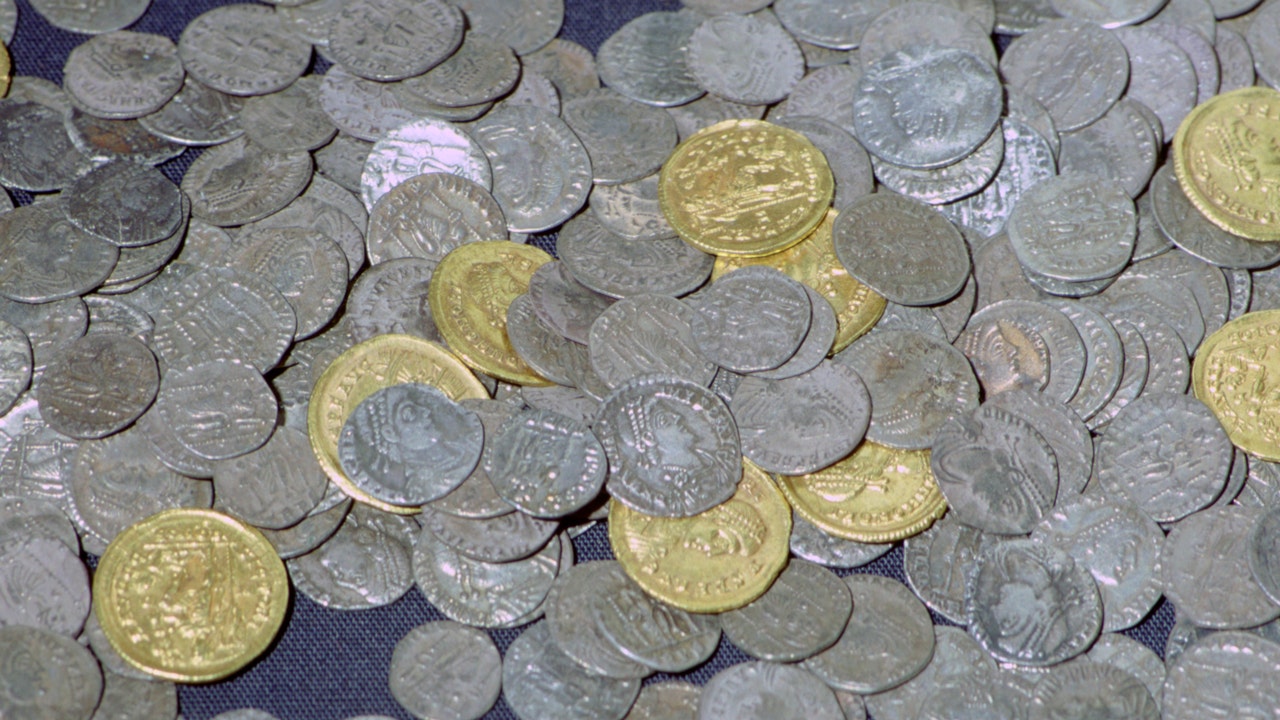
The Hoxne Hoard is one of Britain’s unique archaeological finds, not just by its value, but also by how it was found.
Various sources note the Hoxne Hoard as the largest hoard of Roman treasure ever found in Britain. The collection of treasures is heavily made up of gold and silver coins, though there are other objects, such as tableware and jewelry that were also found.
How this collection of ancient treasures was found adds to its uniqueness.
The Hoxne Hoard is primarily made up of coins. (CM Dixon/Print Collector/Getty Images)
SANXINGDUI RUINS WERE DISCOVERED ACCIDENTALLY BY A FARMER; HAS SINCE BEEN THE SITE OF OVER 60K RELICS
On Nov. 16, 1992, Eric Lawes was scouring a field in Hoxne village in Suffolk, not on the hunt for hidden treasure, but simply looking for a hammer that had been lost on the land.
Lawes was scanning the area with his metal detector, when he came across a small portion of the treasures within what would become the Hoxne Hoard.
After shoveling up some of the silver spoons and gold coins he found, he quickly reported his find to be properly excavated.
Lawes was awarded £1.75 million for his find, which he shared with the farmer who owned the land the treasures were discovered on, according to the Smithsonian Magazine.

While looking for a lost hammer with a metal detector, a man came across a find far bigger. This discovery later became known as the Hoxne Hoard. (iStock)
THE 4,000 ITEMS IN THE STAFFORDSHIRE HOARD MAKE IT THE LARGEST COLLECTION IN HISTORY OF ITS KIND
The very next day, the Suffolk County Council Archaeology Service (SCCAS) was on the scene, according to the World History Encyclopedia.
The gold and silver artifacts part of the Hoxne Hoard weigh around 60 pounds in total, according to Ancient Origins. There are around 15,000 Roman coins as part of the collection, per The British Museum, where many of the items are displayed today. The items were buried in the 5th century A.D.
Other unique finds include pieces of jewelry, like a body chain, six necklaces, three finger rings and gold bracelets, according to the source.

There were many pieces of jewelry found as part of the Hoxne Hoard, including gold bracelets. (CM Dixon/Print Collector/Getty Images)
MOM, SON DIG UP ANCIENT OBJECT OFTEN FOUND NEAR BURIAL GROUNDS WHILE GARDENING
Even though the Hoxne Hoard is heavily made up of coins, one of the best-known treasures that was found was the “Empress” pepper pot. This pot was one of four that were excavated from the site, according to The British Museum. The pepper pot is intricately formed to represent a woman.
Additionally, there were many tableware items that were part of the hoard, including a set of 19 spoons, in good condition, that were decorated with marine themes, according to The British Museum.
Archaeologists believe that the Hoxne Hoard was buried no later than 450 A.D., according to Ancient Origins.
At the end of the 4th century A.D., the western Roman Empire was in a place of uncertainty, with Roman soldiers exiting Britain, leaving citizens to fend for themselves.

One of the significant finds of the Hoxne Hoard is the pepper pot pictured above. (CM Dixon/Print Collector/Getty Images)
While experts have posed varying hypotheses as to why the hoard was buried, one common suggestion is that it was done for protection, with the intent of the owners collecting their precious items once again. In the case of the Hoxne Hoard, the items were never retrieved by their owners.
Today, the Hoxne Hoard is on display at the British Museum in London. The display contains many of the coins, jewelry and tableware, as well as Lawes’ hammer, which he was originally looking for when he stumbled upon the far more significant discovery.
World
Greece confronts disastrously low birth rate in Aegean Islands
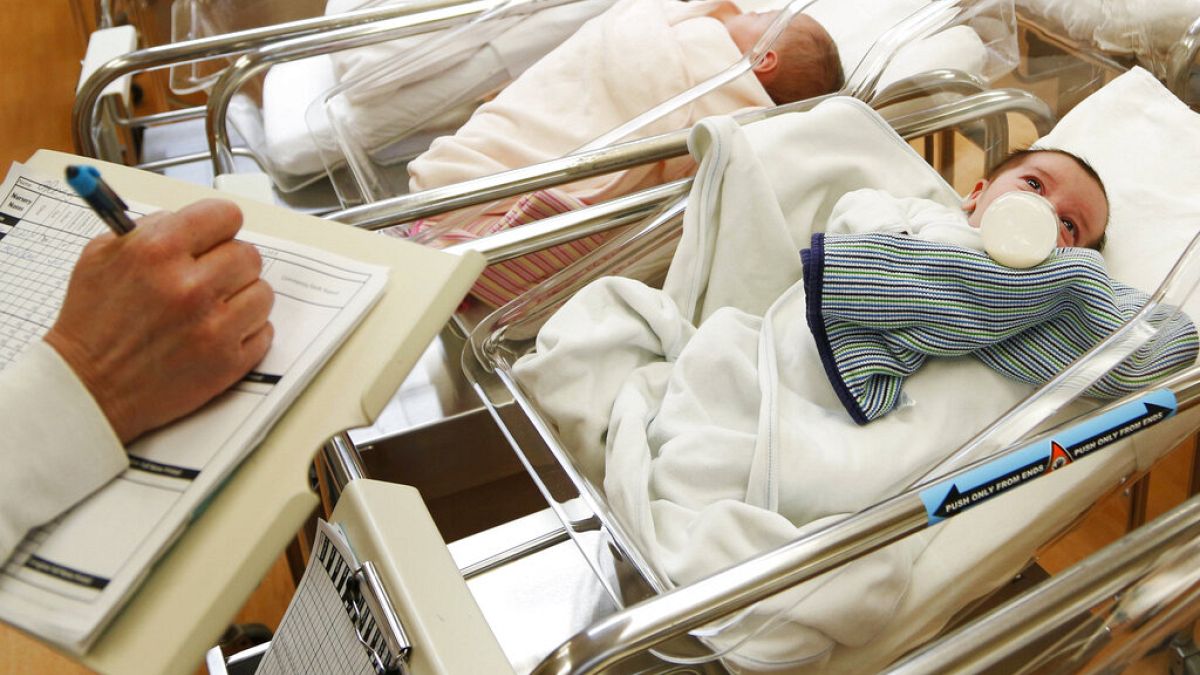
At 1.3 babies per woman, Greece’s fertility rate is among Europe’s lowest — and well below the threshold for population growth.
Authorities in the Aegean Islands have warned that low birth rates spell disaster for their region.
Mayors from the islands expressed serious concerns during the 15th Congress of Small Islands in Milos, where they lamented the continuous downward trend of Greece’s births-to-deaths ratio and said the consequences were already visible in their communities.
A case in point is Agios Efstratios, a small island in the north Aegean with no more than 250 inhabitants.
‘’There are no girls on the island. Or at least there are no more than 2 women under 30 years old,” said Kostas Sinanis, the local mayor.
“The same goes for the boys. We need to search for the incentives that will bring the young boys and girls back to the island, the place where they were born and raised, to create their families. Unfortunately, we had one birth last year and another one three years ago.”
In 2022, Greece recorded its lowest number of births in 92 years — and this year, the country posted the second-largest population decrease in the EU.
Greece’s fertility rate is among the continent’s lowest at 1.3 babies per woman, well below the 2.5 needed for population growth. Economic forecasts indicate its workforce will fall by 50% by 2100, with its output shrinking by 31% over the same period.
Michalis Vlastarakis of the Eurobank Group warned that if nothing is done, disaster will follow.
‘’If we don’t do something, in about 25 years from now, in two decades, one-third of the population will be over 65 years old, and in 2050 we will be 2.5 million less”, said Vlastakaris.
“You don’t need to have studied finance to understand the consequences of these projections on economic indicators, GDP, the workforce, the insurance system, pensions, health, and education, even since there’re going to be fewer schools.’’
Greece’s family ministry said a few days ago that it plans to spend €20 billion through 2035 on incentives to halt the decline, including cash benefits and tax breaks.
The government already spends around €1 billion a year on pro-child measures — but like other European countries doing the same, it has seen little impact.
-
/cdn.vox-cdn.com/uploads/chorus_asset/file/25439572/VRG_TEC_Textless.jpg)
/cdn.vox-cdn.com/uploads/chorus_asset/file/25439572/VRG_TEC_Textless.jpg) Technology1 week ago
Technology1 week agoCharter will offer Peacock for free with some cable subscriptions next year
-

 World6 days ago
World6 days agoUkrainian stronghold Vuhledar falls to Russian offensive after two years of bombardment
-

 World7 days ago
World7 days agoWikiLeaks’ Julian Assange says he pleaded ‘guilty to journalism’ in order to be freed
-

 Technology6 days ago
Technology6 days agoBeware of fraudsters posing as government officials trying to steal your cash
-

 Health4 days ago
Health4 days agoHealth, happiness and helping others are vital parts of free and responsible society, Founding Fathers taught
-

 Virginia1 week ago
Virginia1 week agoStatus for Daniels and Green still uncertain for this week against Virginia Tech; Reuben done for season
-

 Sports5 days ago
Sports5 days agoFreddie Freeman says his ankle sprain is worst injury he's ever tried to play through
-

 News4 days ago
News4 days agoLebanon says 50 medics killed in past three days as Israel extends its bombardment



